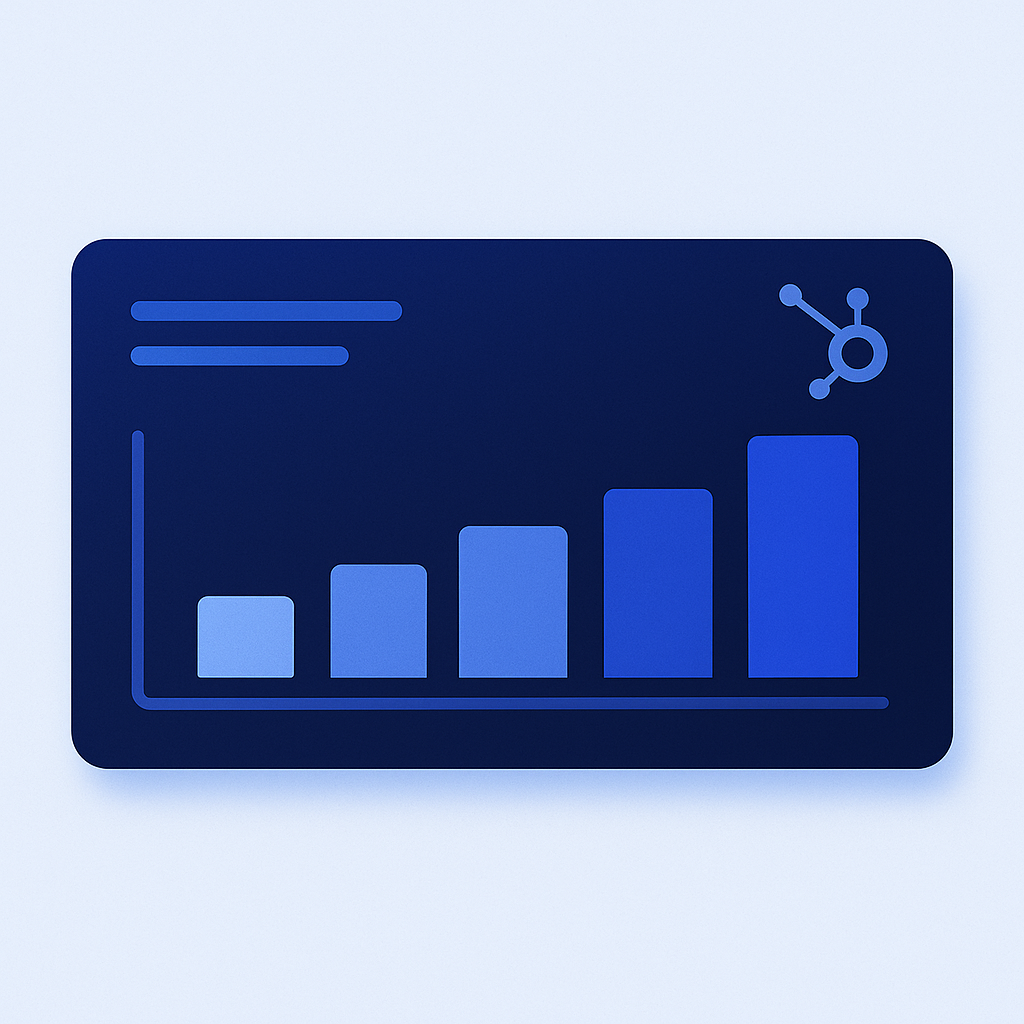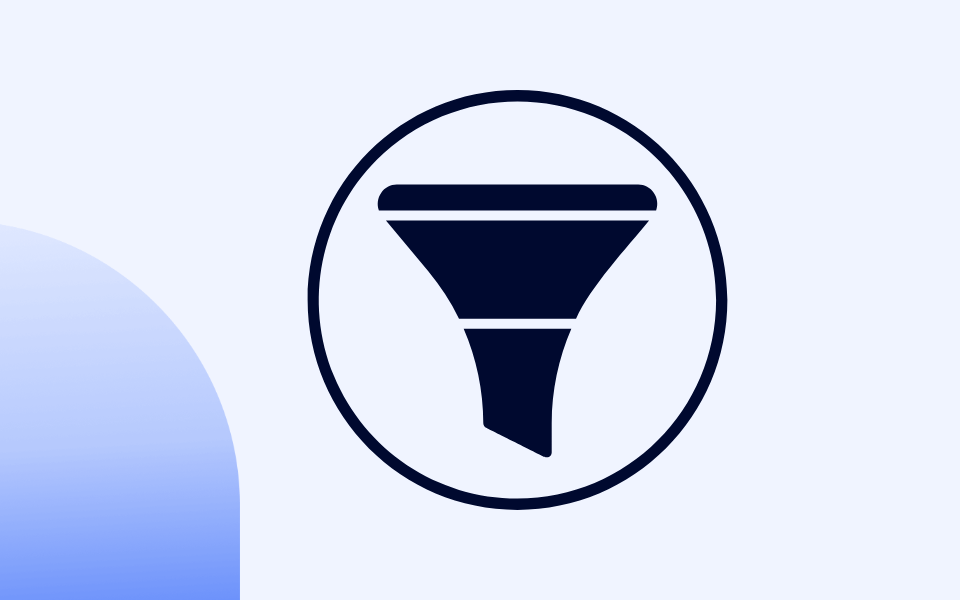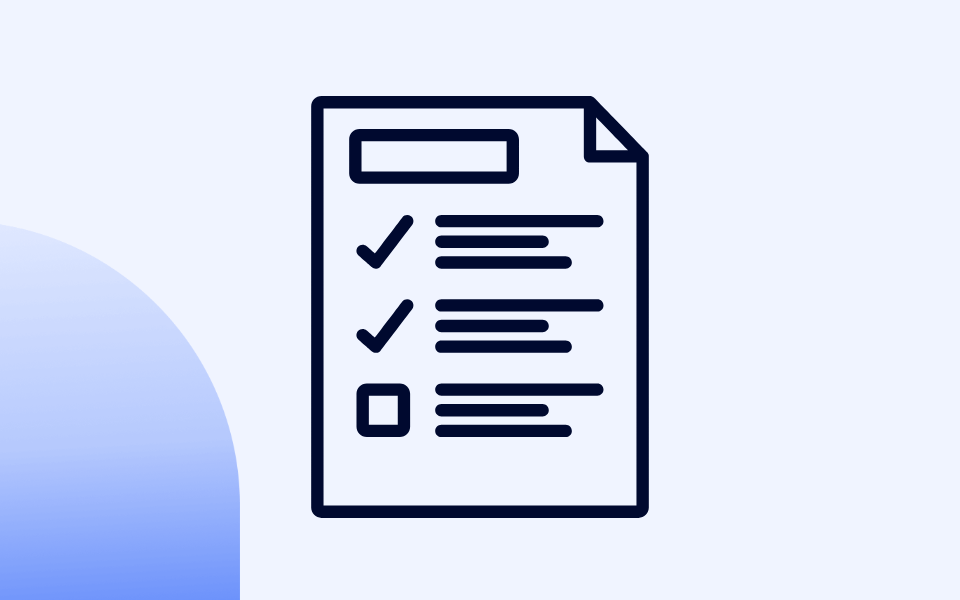HubSpot Lead Nurturing: Lifecycle Stages, Lead Status, and Buying Roles
How to Build a Predictable Sales Process in HubSpot for Maritime Tech Companies

This post will show you step-by-step how to build a structured sales process in HubSpot.
Most B2B companies are struggling with stalled deals and unpredictable forecasts.
The core issue is often clear: their sales process lacked structure and clarity.
By aligning the buyer's journey with their own sales process, companies can transform their chaotic sales efforts into predictable revenue growth.
In this guide, you'll learn how to define your buyer's journey clearly, create practical deal stages that move deals forward, and leverage HubSpot's powerful automation to simplify your workflow.
No more guesswork—just a repeatable process that your sales team (and buyers) will love.
1. Start with the Buyer's Journey
2. How to Map Your Deal Stages in Your HubSpot Sales Process
3. How to Manage Lifecycle Stages and Lead Status in Your Sales Process
4. Why Documentation and Training Are Crucial to Your Sales Process
5. How HubSpot's Enablement Tools Can Boost Your Sales Team's Efficiency
6. How to Use HubSpot to Improve Your Sales Process Continuously
1. Start with the Buyer's Journey

Have you ever wondered why your sales team sometimes feels disconnected from your prospects' buying behavior?
Maybe deals stall unexpectedly, or your internal sales stages don't align with how your buyers make decisions.
The reason often boils down to a straightforward oversight: your sales process isn't aligned with your buyer's journey.
But what exactly is the buyer's journey?
Think of it as the series of steps your prospect naturally takes—from realizing they have a problem to exploring possible solutions and finally choosing the best option.
Your job is straightforward: map your HubSpot sales process directly to these real-world milestones.
Here's precisely how you can do this:
Step 1: Gather Your Sales Team
Get your team together and break down the typical steps your buyers take.
For example, suppose you sell software to the maritime industry.
Your buyer might first notice internal inefficiencies, start researching solutions, join a webinar, have a discovery call with your team to validate the technical aspects, and get executive buy-in.
For example, the steps the buyer goes through could look like this:
-
Business Issue Identified
-
Define Requirements
-
Evaluate Options
-
Internal Approval + Select Vendor
-
Finalize Budget
-
Internal Handover & Setup
-
Go-Live & Adoption
-
Realize Value / Expand
-
Renew / Churn / Lost
Step 2: Translate Milestones into HubSpot Stages
The next step is to convert these milestones into clear, buyer-focused HubSpot deal stages.
Note that not every step in the buyer’s journey needs a pipeline stage.
Your deal pipeline should represent clear, observable milestones in the sales process—moments when a representative takes action or when the deal makes meaningful progress.
While the buyer’s journey might include internal steps like researching options or getting budget approval, those don’t always require a dedicated stage in your CRM.
Instead, focus your pipeline stages on key events: qualification, solution presentation, aligning with the decision-maker, negotiation, and closing.
This keeps your pipeline clean, easy to manage, and more predictive for forecasting.
While the buyer’s journey gives you insight into how your prospects think and make decisions, your pipeline should reflect the actions your sales team takes to move deals forward.
The goal is to capture meaningful progress, like when a discovery call happens, a proposal is sent, or a verbal agreement is reached.
While the full buyer’s journey includes post-sale steps like onboarding, adoption, and expansion, these are typically handled by your Customer Success team, not your sales team.
In this case, we’re focusing only on the pre-sale portion, which your Sales team manages using HubSpot’s Deal Pipeline:
-
Define Requirements → Discovery Call
-
Evaluate Options → Solution Presented
-
Internal Approval + Select Vendor → Go / No-Go
-
Finalizing Budget → Negotiation
-
Internal Approval → Pending signature
-
Closed Won
-
Closed Lost
This clarity makes your process intuitive for your sales team, aligning their actions closely with buyers' actual decision-making.
Don’t Turn Internal Tasks into Deal Stages!
When building a sales pipeline in HubSpot, it can be tempting to create a deal stage for every step your team takes, like “Create Contract” or “Send Proposal.”
But not every internal action deserves a dedicated column in your pipeline.
Overloading your pipeline with administrative or behind-the-scenes steps often makes it harder to forecast, report, and manage deals at scale.
A deal stage should represent a significant milestone in the buying process—something tangible that indicates a change in the deal's status.
For example, “Proposal Sent” or “Contract Sent” works as a deal stage because it's an external event: something has been delivered to the buyer.
But “Create Contract” is simply an internal task. It’s not a milestone for the buyer, and it doesn’t reflect progress from their perspective.
This is where HubSpot Tasks come in.
Tasks are ideal for internal follow-ups and responsibilities like drafting a contract, reviewing terms, or scheduling a demo.
You can assign tasks to individual reps or queue them up in a task queue, and they can even be created automatically as part of workflows:

By using tasks instead of extra deal stages, your pipeline stays focused, clean, and easy to manage, while your internal process continues to move forward.
These tasks can be internal, such as creating a contract, or buyer-facing, like scheduling meetings, sending follow-up emails, or booking a call.
They can be automatically assigned to the deal owner by HubSpot based on the pipeline stage the deal is in.
In short, if it’s an internal step that doesn’t indicate precise forward movement for the buyer, it should be a task, not a deal stage.
Now that you've mapped your buyer's journey, let's translate these insights into actionable HubSpot deal stages, tasks, required properties, email templates, and sales enablement content.
2. How to Map Your Deal Stages in Your HubSpot Sales Process
A deal pipeline in HubSpot helps you track sales opportunities through distinct stages.
These stages should reflect real-world sales milestones, not every internal thought the buyer has, but what your team is actively doing to move the deal forward.
You can create multiple pipelines if you have different sales processes (e.g., direct vs. wholesale).
However, in most cases, a shared pipeline with custom stages is sufficient.
Step 1: Create a Deal Pipeline

-
Go to Settings (icon in the top right).
-
In the left sidebar, click Objects → Deals.
-
Click the Pipelines tab.
-
From the “Select a pipeline” dropdown, click Create pipeline.
-
Name your pipeline (e.g., “Sales Pipeline”) and click Create.
Step 2: Add or Edit Deal Stages

-
In the same Pipelines tab, choose the pipeline you just created.
-
Scroll down to see the deal stages.
-
To edit an existing stage, click its name and type a new one.
-
To add a new stage, click + Add stage at the bottom.
-
For each stage, set a deal probability (e.g., 20%, 60%, 90%) to support forecasting.
-
Drag and drop stages to reorder them as needed.
-
Click "Save" in the bottom left when you're done.
Step 3: Add Conditional Properties
You can require reps to fill in specific fields when moving a deal to a particular stage. For example, require "Close Date" when moving to "Pending signature."

-
In the Pipelines tab, select your pipeline.
-
Find the stage where you want to add logic.
-
In the “Conditional stage properties” column, click Edit properties.
-
Choose which fields to show or require.
-
Click Apply logic and then Save.
Step 3: Set Specific Exit Criteria
For each stage, document exactly what happened before moving forward.
This prevents deals from moving prematurely.
For example, the exit criteria for "Technical Validation Confirmed" might include:
-
All technical decision-makers explicitly confirm: that there are no significant objections.
-
Your solution's technical specifications or demo: have been approved.
-
The buyer explicitly secures: the budget and resources for the next stage.
Clear exit criteria mean fewer stalled deals and more accurate pipelines.
Step 3: Assign Closing Probabilities
Assign probabilities to each stage to accurately forecast revenue. Start with realistic estimates:
-
Discovery Call: 20%
-
Solution Presented: 30%
-
Go / No-Go: 60%
-
Negotiation: 70%
-
Pending signature: 90%
-
Closed Won: 100%
Use HubSpot's reporting to regularly refine these probabilities based on actual outcomes, improving forecasting accuracy.
Step 4 (Optional): Create Multiple Pipelines if Needed
If your business serves different markets or products, such as software vs. professional services, consider separate pipelines with unique stages tailored to each audience.
This keeps your sales approach precise and relevant to different types of buyers.
Mapping your deal stages this way turns your sales process into a reliable, predictable system.
You'll instantly know where deals stand, what needs attention, and how likely each deal will close, making your sales team's life easier and your forecasts more accurate.
With your deal stages clearly defined, let's move on to managing leads effectively before they enter your pipeline.
3. How to Manage Lifecycle Stages and Lead Status in Your Sales Process
Have you ever found your sales reps chasing after leads that aren't ready to buy, while potentially valuable contacts slip through unnoticed?
This common frustration comes from not managing leads before they reach your pipeline.
Fortunately, HubSpot provides two essential tools—Lifecycle Stages and Lead Status—to solve this problem.
Let's break down each clearly and show precisely how to use them effectively:
Step 1: Understand and Set Up Your Lifecycle Stages

Lifecycle Stages give you a clear, high-level picture of where each lead sits in your overall funnel. HubSpot's default stages include:
-
Subscriber: Just engaging with your content, not yet ready to buy.
-
Lead: Shows basic information, maybe downloaded an eBook or attended a webinar.
-
Marketing Qualified Lead (MQL): Meets specific criteria indicating possible buying intent.
-
Sales Qualified Lead (SQL): Confirmed and ready for direct sales engagement.
-
Opportunity: Actively in the sales process with an open deal.
-
Customer: Has purchased from you.
-
Evangelist: Promotes or refers your solution to others.
Start by clearly defining triggers or criteria to move leads through these stages automatically.
For instance, a lead might become an SQL after requesting pricing or a demo on your website.
As the sales team focuses on Sales-Qualified Leads, Opportunities, and Customers, this article will specifically focus on the sales process and the pipeline stages that support these lifecycle stages.
Generally, a contact becomes a Sales-Qualified Lead (SQL) when they take a high-intent action—such as requesting pricing or booking a demo.
They’re marked as an Opportunity once they are associated with an open deal in the sales pipeline.
Finally, a contact becomes a Customer when they’re associated with a deal that reaches the Closed Won stage.
Step 2: Set Clear Lead Statuses for Daily Sales Tracking

Lifecycle stages offer a big-picture view, but lead statuses provide your sales team with helpful, granular details for their day-to-day activities. Common statuses you might use include:
-
New: The lead was recently assigned and is awaiting outreach.
-
Attempted to Contact: Outreach attempted, but no reply yet.
-
Connected: Active conversation ongoing; qualifying or scheduling next steps.
-
Open Deal: Qualified lead with a deal actively in progress.
-
Unqualified: Lead deemed unsuitable or unresponsive.
-
Bad Timing: Interested, but not ready to move forward yet.
-
Closed Won: The deal was successfully closed and the customer signed.
-
Closed Lost: The deal did not move forward, and the opportunity was lost.
Customize these to fit your exact sales process. Use workflows so that updating lead statuses becomes automatic, and your sales team has a complete overview of all their opportunities.
4. Why Documentation and Training Are Crucial to Your Sales Process
You've spent time carefully mapping out your sales process in HubSpot, but here's a question:
Does your team clearly understand and consistently follow it?
Without clear documentation and regular training, even a great process quickly falls apart, leading to confusion, wasted effort, and lost deals.
Here's how you can avoid that scenario by effectively documenting your sales process:
Step 1: Choose and Document Your Sales Methodology
Your sales methodology is how your team approaches selling. Clearly define and document how your chosen methodology applies at every stage of your HubSpot pipeline.
SPICED is one methodology that provides detailed questions your team should ask to uncover the Situation, Pain, Impact, Critical Event, and Decision criteria during the "Discovery" stage.
MEDPICC is another methodology that documents how your team verifies Metrics, economic buyers, Decision criteria, paper processes, Implications of pain, Champions, and Competition.
Documenting your methodology ensures consistency and helps your team know exactly what approach to take at every stage of the sales process.
Step 2: Create a Centralized Knowledge Base
Make your sales documentation accessible through a centralized resource like HubSpot Playbooks.
Include these critical items:
-
Deal Stages & Exit Criteria: Clear definitions and requirements to move between stages.
-
Buyer Personas & Common Pain Points: Specific details to help your team quickly understand and empathize with buyers.
-
Templates & Call Scripts: Standardized communication for each sales scenario.
-
Competitive Intel & Objection Handling Guides: Clear, easy-to-access responses for handling common objections.
With this in place, your team can quickly access exactly what they need, right when they need it.
Step 3: Train Your Sales Team Consistently
Documentation alone isn't enough. Regular, structured training ensures your team uses your defined process.
Use formal training sessions to walk your team through documented sales stages and your chosen methodology, incorporating practical role-play scenarios for hands-on experience.
Reinforce this with weekly pipeline reviews in HubSpot, regularly checking that your team correctly uses deal stages, follows exit criteria, and consistently applies your sales methodology.
5. How HubSpot's Enablement Tools Can Boost Your Sales Team's Efficiency
You've built a structured sales process, but how easy is it for your team to follow it consistently?
This is where sales enablement tools in HubSpot, such as Tasks, Email Templates, Sequences, Snippets, and Documents, can drastically improve your team's efficiency and effectiveness.
Let's walk through exactly how you can use each of these tools:
Step 1: Complete More Tasks with Task Queues
Remember how we turned internal todos into tasks? Now, your sales team will automatically be assigned internal tasks they need to complete for every stage in the pipeline.
Task queues in HubSpot help you group and complete tasks efficiently, especially when working through follow-ups, calls, or email sequences.
You can create personal or shared queues to organize your workflow or collaborate with your team.
-
Go to CRM > Tasks in your HubSpot account.
-
In the top right, click Manage queues.
-
In the side panel, click Create task queue.
-
Give your queue a name (e.g. "Demo Follow-ups") and click Save.
Create a new task in a queue:
-
Go to CRM > Tasks, then click Create task.
-
Fill in the task details and choose a queue from the Queue dropdown.
Add existing tasks to a queue:
-
Select the checkboxes next to the tasks you want to move.
-
Click Change queue and select the new queue.
-
Click Save.
Step 2: Save Time with Email Templates

HubSpot's email templates help your team send quick, personalized emails without having to rewrite them every time.
Create templates for common sales scenarios, like follow-ups after meetings, proposal deliveries, or routine check-ins.
To keep emails authentic and personal, use personalization tokens like the first name or the company name.
Organize your templates by sales stage, using descriptive names like "Discovery Follow-up" or "Post-Demo Check-In" for easy access and consistent use.
Example template (Post-Demo Follow-up):
Hi [First Name],
It was great speaking with you today! I've attached the technical overview we discussed, especially highlighting [Feature X] to address your [specific challenge].
Can we reconnect on [date/time] to review your thoughts and discuss the next steps?
Thanks,
[Your Name]
Templates mean quicker, more consistent follow-ups—critical for moving deals forward.
Step 3: Automate Follow-ups with Sequences
Sequences help you automate follow-up emails and reminders, saving your reps valuable time and reducing manual tasks. Set up a typical sequence like this:
-
Day 1: Personalized intro email.
-
Day 3: Follow-up email with helpful resources.
-
Day 5: Automatic reminder for a follow-up call.
Sequences automatically stop when a prospect replies, so your team won't accidentally send unwanted messages. Regularly track open, click, and reply rates in HubSpot to refine sequences for even better results.
Step 4: Quickly Respond with Snippets
Snippets are short, pre-written text blocks that can be easily inserted into emails or notes, saving your team from having to type common responses or information over and over.
Common scenarios to use snippets include:
Prepare your team with clear, easy-to-access responses for common scenarios, such as answering pricing questions, summarizing product features, and addressing typical objections.
This ensures consistency and confidence during customer interactions.
Snippets streamline responses, making your team quicker and more consistent when addressing common questions.
Step 5: Share and Track with Documents
The Documents tool lets you share sales collateral, such as proposals, slide decks, or case studies, directly from HubSpot and see which prospects view them.
Get instant notifications when a prospect views your document, allowing your team to follow up immediately at the right moment.
Additionally, gain valuable insights into your prospect’s interests or concerns by seeing exactly which sections or pages they spend the most time reviewing.
Example scenario: You send a proposal via HubSpot Documents and receive a notification when the prospect repeatedly views the pricing section.
Your representative can proactively address pricing questions, making your response timely and relevant.
6. How to Use HubSpot to Improve Your Sales Process Continuously
Your sales process isn't something you build once and forget. But here's an important question: Are you regularly monitoring, forecasting, and refining your pipeline?
Without ongoing optimization, even the best-designed processes lose their effectiveness over time. Luckily, HubSpot gives you powerful tools to track and continuously improve your sales results.
Here's precisely how you can do it:
Step 1: Regularly Monitor Your Sales Pipeline
Use HubSpot dashboards and reports for a clear, real-time view of your pipeline's health.
Pay attention to:
Pipeline Dashboard:
Quickly spot stuck deals or bottlenecks. For instance, deals repeatedly stalling in "Technical Validation" might signal the need for additional training or, more precisely, more explicit criteria.
Funnel Reports:
Analyze conversions at each funnel stage (Lead → MQL → SQL → Opportunity). Investigate and refine your qualification criteria or outreach approach if conversions drop significantly between stages.
Activity Reports:
Monitor how actively your team engages with leads (calls, emails, meetings). Quickly identify reps who may need additional support or coaching.
Regular monitoring means you'll spot issues early, keeping your pipeline healthy and deals moving forward smoothly.
Step 2: Forecast Accurately Using Weighted Pipelines
HubSpot helps you forecast revenue realistically by assigning probabilities to each deal stage. Here's how it works practically:
For example:
A EUR 100,000 deal at the "Technical Validation" stage (30% likelihood) counts as EUR 30,000 toward your projections.
An EUR 200,000 deal at "Executive Sign-off" (60%) is EUR 120,000.
Regularly review actual closing rates for each stage, then adjust these probabilities in
HubSpot quarterly. Your forecasting accuracy improves over time, helping you plan and allocate resources more effectively.
Step 3: Hold Regular Pipeline Reviews
Schedule consistent weekly pipeline meetings and deeper monthly reviews. Use these sessions to ask essential questions, such as:
"Why are certain deals stalled?"
"Have we fully met our documented exit criteria at each stage?"
"Do our current deal stages still accurately reflect our buyers' real-world decision process?"
This ongoing review keeps your process relevant, accurate, and aligned with buyer behavior.
Step 4: Analyze Wins and Losses
Regularly analyze your closed-won and closed-lost deals to uncover patterns and actionable insights.
If you followed this guide, you will have added a text field (not a predefined dropdown) where your sales team needs to fill in qualitative data about why they won or lost a deal.
Pay close attention to common objections causing delays or losses, buyer milestones that your team frequently misses or misunderstands, and inaccuracies in stage probabilities that negatively impact your sales forecasts.
Use these insights to update your documentation, methodology, and training, ensuring continuous improvement.
Conclusion
You now have a clear roadmap for turning your HubSpot sales process into a predictable way of growing your company.
You've learned how to align your deal stages directly with your buyer's journey, effectively manage leads, clearly document your process, empower your team with HubSpot's enablement tools, and continuously monitor and improve your pipeline.
But remember: having the process is just the start. Your real advantage comes from consistently following, measuring, and refining it.


